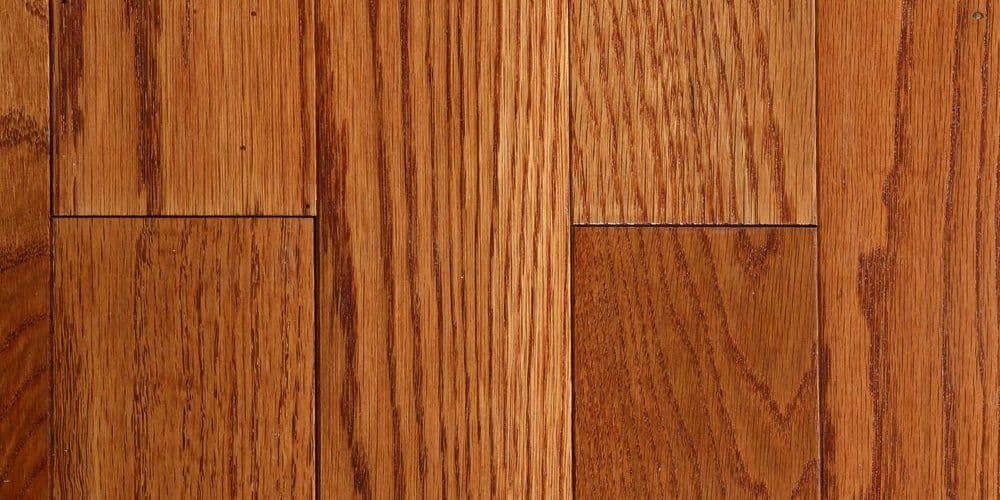Solid wood flooring remains an extremely popular choice for today’s homeowners, and it is easy to see why. Wood is a natural product that provides warmth, beauty, and comfort underfoot. Wood floors are durable, easy to care for, easy to decorate with, and increase the value of homes where they are installed. Carpet can trap dust, dirt, and pet hairs, but all of these are easily swept away with wood floors. And while décor trends come and go, solid oak wood flooring remains constant. If you’ve ever seen hideous shag carpeting in a modern home, you know how dated and dingy old carpet can look. With prefinished solid wood flooring, it’s easy to update your home’s décor without also having to spend money to updating the flooring.
When choosing cheap solid wood flooring, the first thing to decide is which wood species you prefer. Generally, solid hard wood flooring is divided into two categories: domestic woods and exotics. Common domestic woods include red oak, white oak, cherry, maple, walnut, birch, ash, hickory, and yellow pine. All of these are hardwoods, with the exception of yellow pine, which is a softwood. Domestic species which are commonly used in flooring include: Brazilian cherry, Santos mahogany, Brazilian redwood, and Brazilian walnut. As you’ll see, each of these woods has its own unique look and advantages.
When selecting a species, you should consider a wood’s Janka score if you are concerned about durability. The Janka scale is a way to measure the hardness of wood. The Janka score is the number of pounds of force it takes to embed an 11.28 mm steel ball into any given wood such that the ball is inserted to half of its diameter. This may not mean much to the average layperson, but many people are familiar with red oak flooring since it is one of the most commonly used hardwoods. Red oak has a Janka score of 1290, while hard maple has a Janka score of 1450. This tells you that hard maple is 12% stronger than red oak. Hard maple is commonly used in bowling alley floors, which should give you an idea about its durability.
White oak has a Janka score of 1360, making it a bit stronger than red oak; cherry is much softer, with a Janka score of 950. Because cherry is 26% softer than red oak, you should expect it to be less durable. It will show dents and dings sooner than red oak would, with less force required to mar the floor. That said, cherry is a stunning wood and is popular for flooring despite its softness. It has an attractive, even grain, and while new cherry is nearly as light in color as maple, it naturally darkens with age into a deep reddish brown color that many people find beautiful.
Birch and ash are similar to red oak in terms of durability, while pine is much softer than cherry with a Janka score of around 690. Hickory is one of the hardest domestic woods commonly used in solid maple wood flooring, with a Janka score of 1820. It is 41% stronger than red oak and has characteristic dark streaks running through its grain pattern, making it a popular choice for homeowners looking for a country-style or rustic wood floor.
Exotic wood species are also very popular for solid wood flooring. Exotics typically look very rich and unusual, and they often have Janka scores that are higher than the commonly used domestic woods. Unlike American cherry, for example, Brazilian cherry is extremely hard and durable with a Janka score of 2350. It has a much darker and deeper red color than the reddish-brown of domestic cherry. Santos mahogany is similar, with a Janka of 2200. Some species are even harder, such as Brazilian redwood (with a Janka score of 3190) or Brazilian walnut, which scores an incredible 3684 on the Janka scale. This makes it nearly three times as hard as red oak, and it is easy to understand why its nickname is “Ironwood.”
After you have selected a wood species based upon the look you want to achieve and the durability you require, it’s time to consider whether you want your bamboo solid wood flooring to be strip, plank, or parquet. Strip flooring is when each individual piece of wood is no more than 3.5 inches wide. This is the most common choice. Plank floors have wider boards; each board being anywhere from 3.5 inches to 7 inches or more in width. This is usually the most expensive choice.
Plank floors are often found in historic homes, and using planks in your modern home captures some of the charm of the historic look. Parquet floors are usually wooden squares consisting of small strips of real wood arranged in a geometric pattern. Though they were very popular in previous times, they have fallen out of favor with today’s homeowners. Still, they can give a unique, ornate look that is worth considering.
Whichever type of solid wood flooring you choose, you will be making a smart investment that will serve you well for decades to come.
Related Posts
<>



